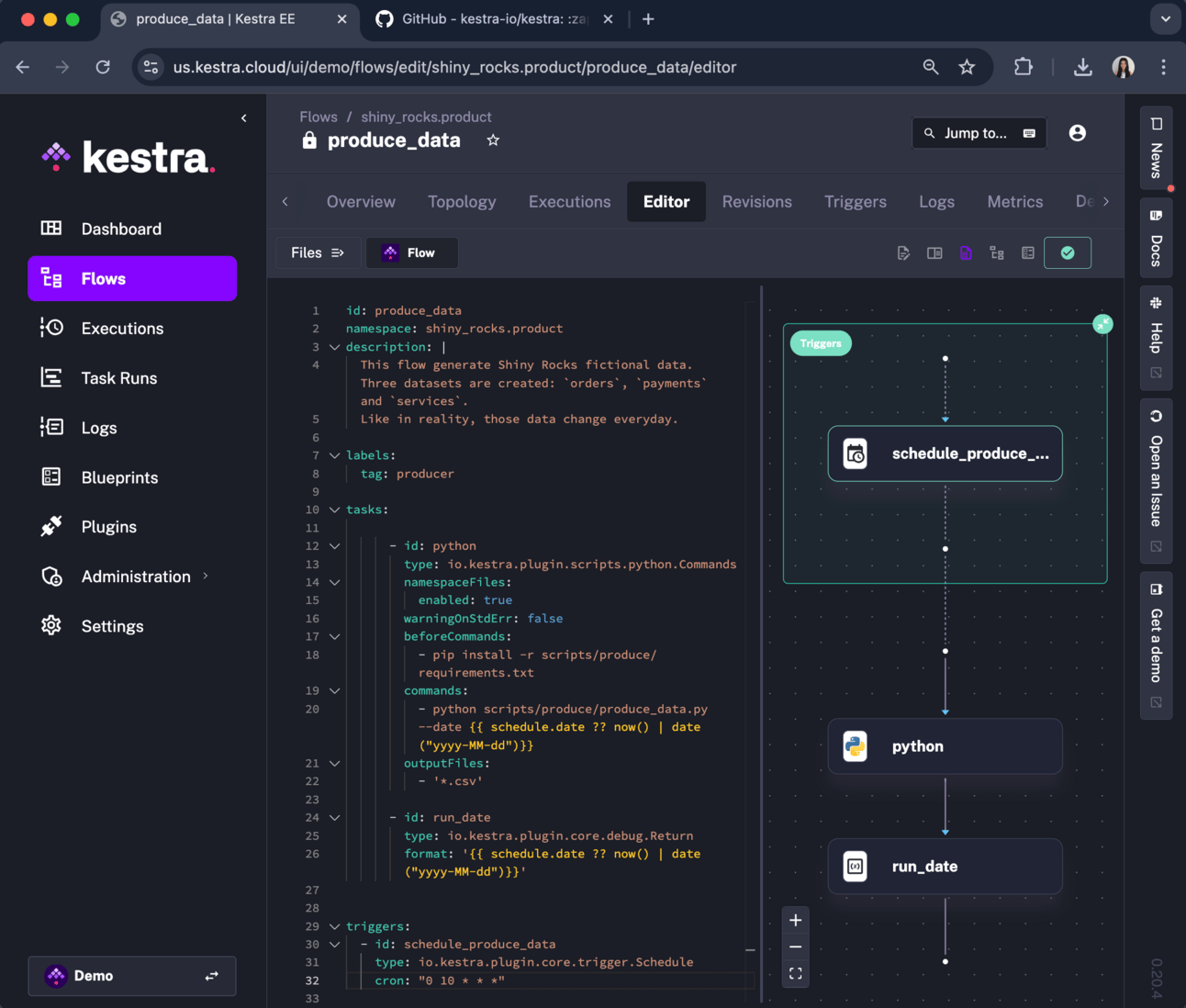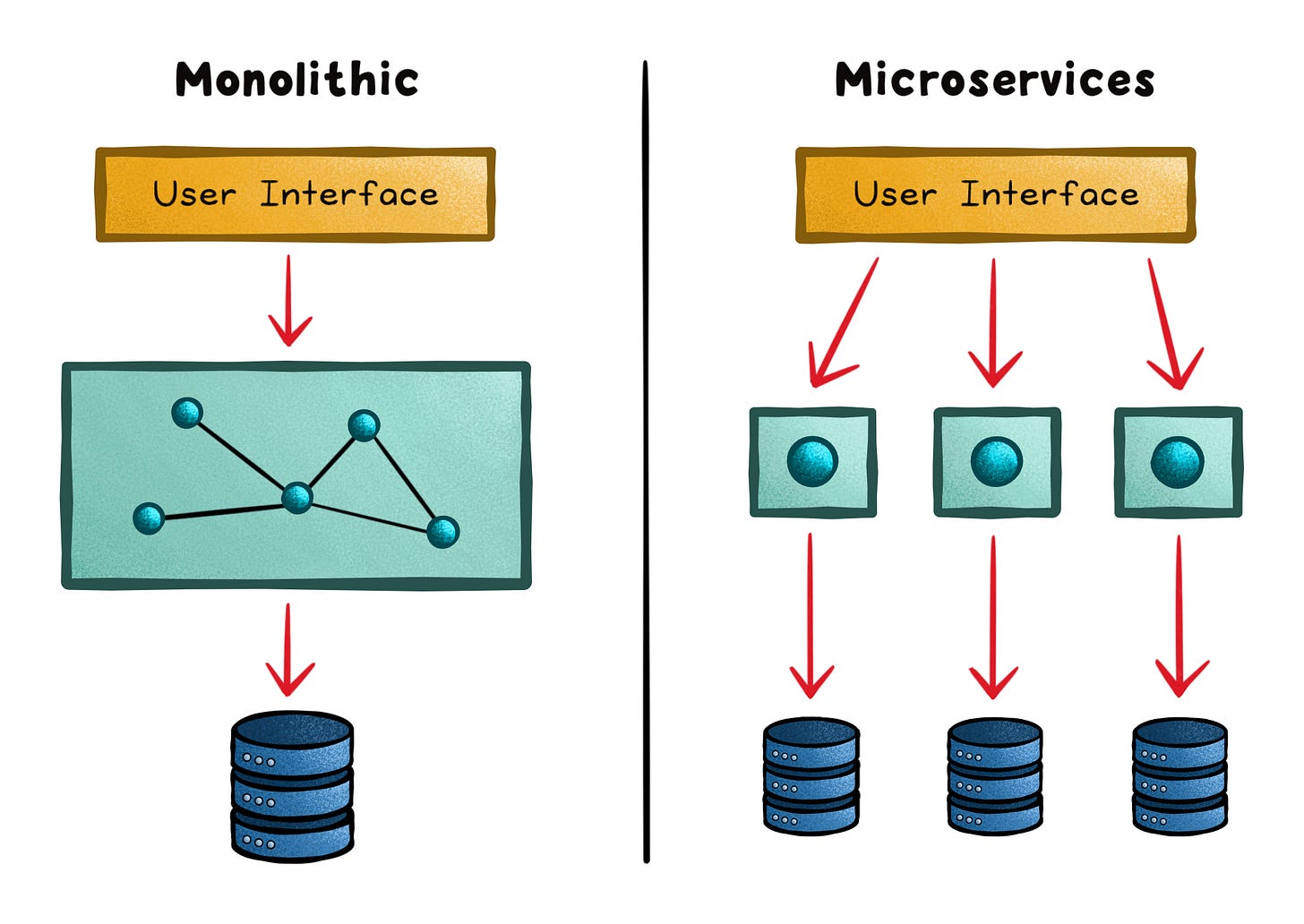Strategies For A Successful Microservices Transition
(4 Minutes) | Navigating Transition to Microservices
Get our Architecture Patterns Playbook for FREE on newsletter signup:
Open-source meets powerful orchestration with Kestra
Presented by Kestra
Built for developers, Kestra allows you to automate your pipelines and workflows with minimal configuration.
Join the community and help shape the future of orchestration.
Strategies for a Successful Transition to Microservices
Solutions should be designed based on what the system needs right now; as the system evolves, so should your solution.
This is why it’s common for systems to start off as a monolith, and then break out into microservices in the future.
However, the transition is no easy feat.
Large system changes can be very daunting. But you can save yourself from a lot of headaches by learning from others; which is where best practices can come in handy.
Today we’ll look at best practices and strategies that'll make going from monolithic to microservices a smoother process. Let’s dive in!
Deep Dive into System Boundaries with Domain-Driven Design
Starting the transition requires a deep understanding of your system’s domain.
Leveraging Domain-Driven Design (DDD) to identify bounded contexts offers a granular approach to defining microservices.
This strategy not only clarifies service boundaries but also aligns them with the business domain, ensuring that each microservice encapsulates a distinct business capability.
Start by listing the different capabilities and business domains in your system.
Once that’s done, identify the boundaries of each.
This will help guide the transition and ensure your microservices architecture stays loosely coupled.
Strategic Planning with Advanced DevOps Integration
Before you start breaking up your monolith, make sure you have planned out your strategy from start to finish.
Incorporate DevOps practices to ensure development and deployment are streamlined, and the system stays resilient.
Implementing CI/CD pipelines and infrastructure as code (IaC) ensures that development and deployment processes are not only streamlined but also resilient and consistent across environments.
Adopting a service mesh is also advisable as it simplifies inter-service communication, provides service discovery, load balancing, and secures service-to-service communication within the microservices architecture.
Starting Small and Scaling with Experience
Start with the lowest-hanging fruit.
Tackling the transition by starting with less complex services allows for an iterative learning process.
This will help you quickly test and refine your approach.
Which will save you from a lot of headaches once you tackle those large and heavily intertwined services.
Also, leveraging modularization techniques at this stage can significantly ease the decomposition process, allowing your team to isolate and transition functionalities with minimal dependencies.
Ensuring Resilience through Design Patterns
With a change as big as this one, you can expect something to go wrong.
Probably a lot.
Anticipating and designing for failure is critical in a distributed system like microservices.
As you’re splitting out the services, make sure you’re adding mechanisms that help the system handle failure.
Implementing design patterns such as Circuit Breaker, Bulkhead, and Retry can enhance system resilience by gracefully handling failures and preventing cascading failures.
Integrating health checks and implementing strategies like rate limiting and redundancy are also very important.
Emphasizing Observability for Informed Decision-Making
It’s always a good idea to test your changes.
But when your changes are so far-reaching, it’s almost impossible to test for every scenario and edge case.
This is why logs and alerts are so important. It helps you quickly identify, debug, and fix problems.
However, in microservices, traditional logging and alerting mechanisms can be insufficient.
Embracing observability through comprehensive logging, metrics collection, and distributed tracing is key.
Tools such as Prometheus for monitoring, Grafana for dashboards, and Jaeger or Zipkin for tracing, provide deep insights into the system's health and performance.
These tools facilitate proactive issue resolution and informed decision-making.
Addressing Performance and Security Challenges
The transition to microservices introduces specific performance and security challenges.
Latency issues are commonly encountered in microservices architectures due to the need for frequent, complex network calls between services.
Adopting gRPC can effectively mitigate these latency issues.
Securing microservices requires a robust strategy encompassing service-to-service authentication and authorization. Implementing OAuth2.0 and OpenID Connect protocols, along with leveraging a service mesh for secure communication, is essential.
Final Thoughts
The transition to microservices can seem like a mountain to climb, but with the right tools and strategies, it's more like a series of manageable hills.
It’s a complex undertaking, so it’s important to expect things to go wrong.
Adopting a comprehensive approach that follows the best practices that have been developed over the years can make the process a lot smoother.
Subscribe to get simple-to-understand, visual, and engaging system design articles straight to your inbox:




